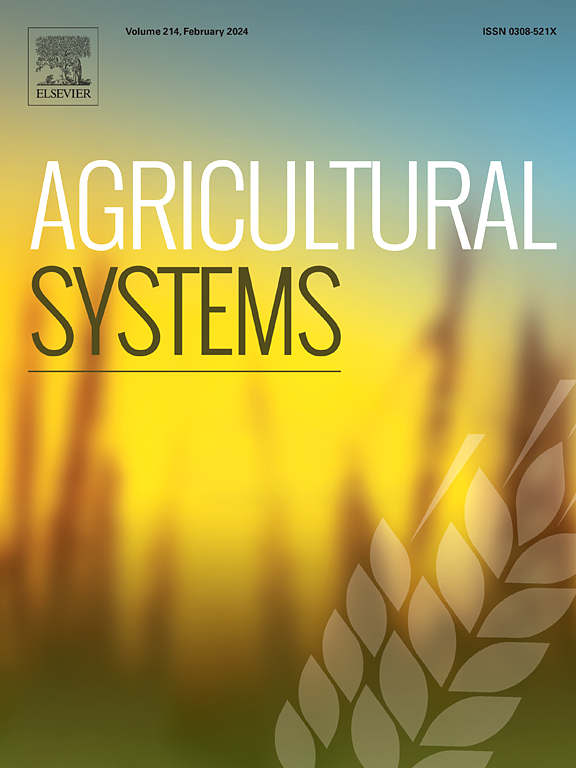Which types of quantitative foresight scenarios to frame the future of food systems? A review
IF 6.1
1区 农林科学
Q1 AGRICULTURE, MULTIDISCIPLINARY
引用次数: 0
Abstract
CONTEXT
Quantitative scenarios have become common tools to explore the evolution of agricultural and food systems and their necessary transition towards greater sustainability. Yet, despite the diversity in methods and questions explored, a notable gap remains in methodically categorizing such scenarios.
OBJECTIVES
Through reviewing a broad range of studies, this paper aims to address this gap. It pursues two main objectives: (1) proposing a comprehensive typology classification of distinctive scenario types; (2) delving into the practical implications that diverse scenario designs bring to the forefront.
METHODS
Based on a snowball sampling method, 36 quantitative food system scenario studies were included in the sample and reviewed. A coding process allowed to characterize each scenario based on a set of variables focused on the scenarios' design process (e.g. purpose of the scenarios, number of scenarios tested, scale of analysis, consideration of production systems, sectors of interest, considered sustainability dimensions, etc.). Typology identification involved two iterative rounds of discussion among the authors, based on variables deemed pivotal for distinguishing scenario types.
RESULTS AND CONCLUSIONS
The paper proposes four scenario types of quantitative food system scenarios, centered on the scenarios' purpose and design process. Scenario types A and B are more normative as they seek to demonstrate the feasibility of a specific scenario or frame the conditions for its feasibility, differing in the number of scenarios tested (respectively one and many). Scenario types C and D are more exploratory as they aim to assess the consequences of different scenarios, differing in the number of scenario variables being explored (respectively one and many). Besides the proposed classification, the paper discusses important methodological considerations related to scenario design (e.g. the consideration of multiple sustainability dimensions, the adoption of participatory approaches, etc.).
SIGNIFICANCE
This paper contributes to enhancing coherence across food system foresight studies and helps to ensure that quantitative scenarios are utilized effectively for their intended purposes, such as assessing the feasibility of achieving a goal or evaluating different options.

求助全文
约1分钟内获得全文
求助全文
来源期刊

Agricultural Systems
农林科学-农业综合
CiteScore
13.30
自引率
7.60%
发文量
174
审稿时长
30 days
期刊介绍:
Agricultural Systems is an international journal that deals with interactions - among the components of agricultural systems, among hierarchical levels of agricultural systems, between agricultural and other land use systems, and between agricultural systems and their natural, social and economic environments.
The scope includes the development and application of systems analysis methodologies in the following areas:
Systems approaches in the sustainable intensification of agriculture; pathways for sustainable intensification; crop-livestock integration; farm-level resource allocation; quantification of benefits and trade-offs at farm to landscape levels; integrative, participatory and dynamic modelling approaches for qualitative and quantitative assessments of agricultural systems and decision making;
The interactions between agricultural and non-agricultural landscapes; the multiple services of agricultural systems; food security and the environment;
Global change and adaptation science; transformational adaptations as driven by changes in climate, policy, values and attitudes influencing the design of farming systems;
Development and application of farming systems design tools and methods for impact, scenario and case study analysis; managing the complexities of dynamic agricultural systems; innovation systems and multi stakeholder arrangements that support or promote change and (or) inform policy decisions.
 求助内容:
求助内容: 应助结果提醒方式:
应助结果提醒方式:


